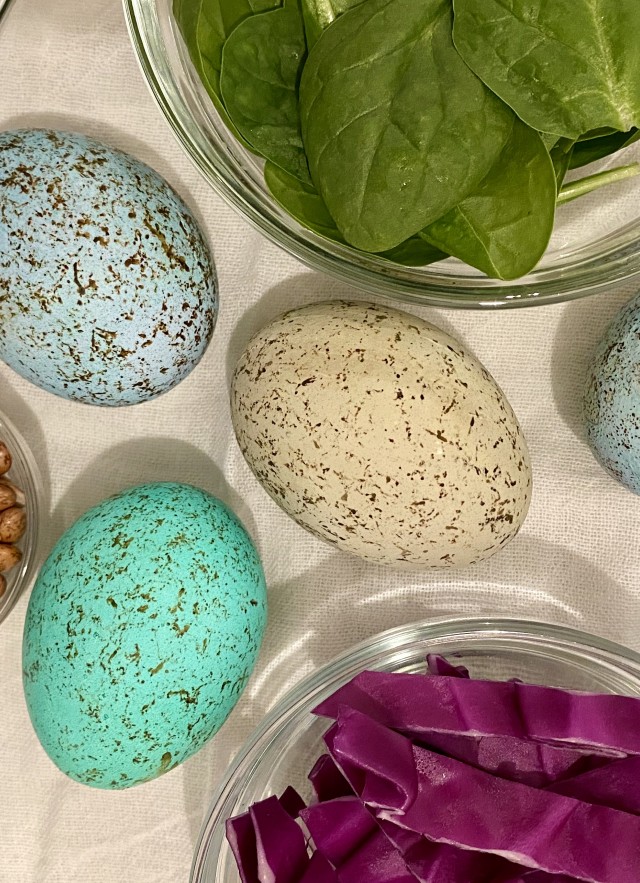
suggested for elementary school (with parent help)
By Emily Baker and Taylor Stephens
Eggs can come in a variety of colors, shapes and sizes...but have you ever wondered what color a dinosaur egg was? Thanks to some special tools, paleontologists have a good idea about what different dinosaur eggs looked like back in the Mesozoic Era. Theropod eggshells could be various shades of blue-green and some (like Deinonychus eggs) even had red-brown speckles on them! Since mother theropods left their nests open and uncovered, how do you think speckles might help the baby dinos inside those eggs?
Using what paleontologists have discovered, we’ll help you to make some dinosaur eggs of your own at home for your breakfast table!
To Make Your Own Deinonychus Eggs
Ingredients and Tools
-
hard-boiled eggs*
-
1 red cabbage + 1 bunch spinach + 4 Tbsp ground coffee (or Nutella in a pinch)
-
OR food-safe food coloring
-
-
1 quart of water + 1 quart water + 2 cups of water
-
2 Tbsp + 2 Tbsp white vinegar
-
2 Large bowls
-
Tongs or large spoons
-
Paintbrush
-
OR ½ cup of rice, beans, lentils, peanuts (any dry pantry good)
-
Instructions
Natural Dye
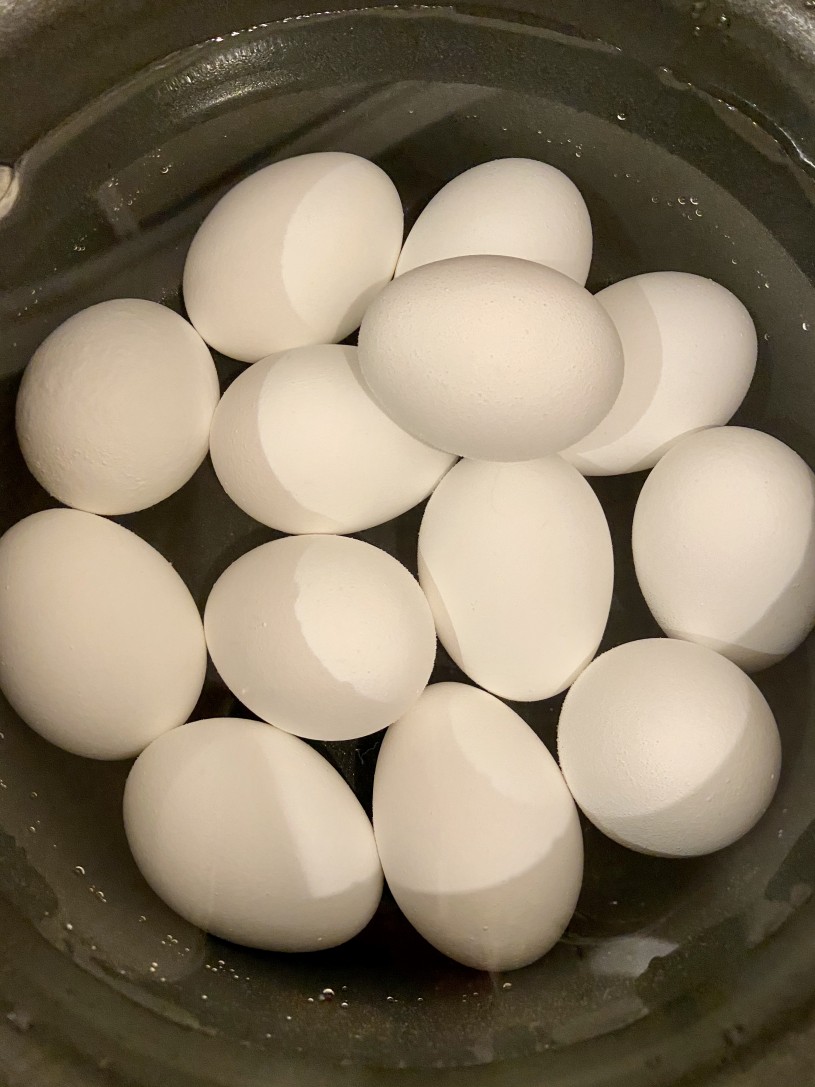
- If making your own natural dye, simmer the sliced cabbage in 1 quart of water & 2 Tbsp vinegar for 30 minutes; let the mixture cool and strain out the cabbage. Do the same for the spinach in a separate pot.
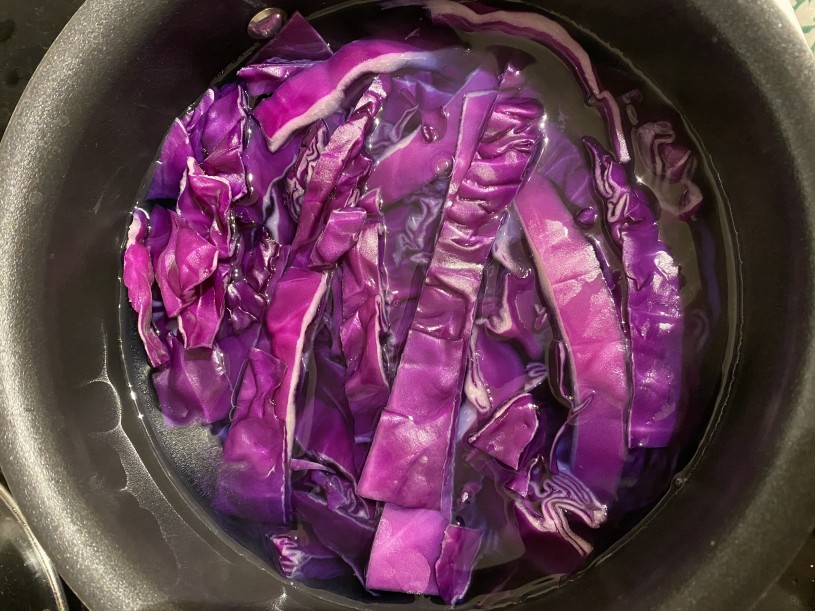
- Set your hard boiled eggs into the room-temperature cabbage dye for 90 minutes, stirring frequently for even color. They’ll look blue instead of purple and they’ll get darker blue as they dry!
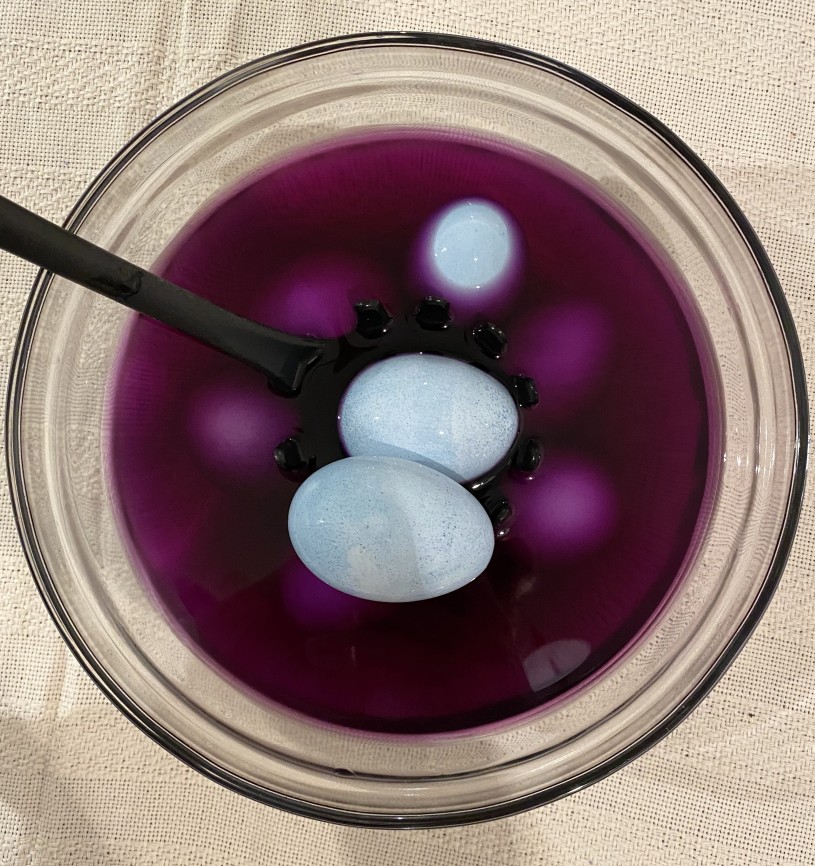
- Dip cabbage-dyed eggs for 30 minutes into spinach mixture until you have a blue-green shade. If you have some around, add a tablespoon of turmeric to the spinach dye to make it brighter.
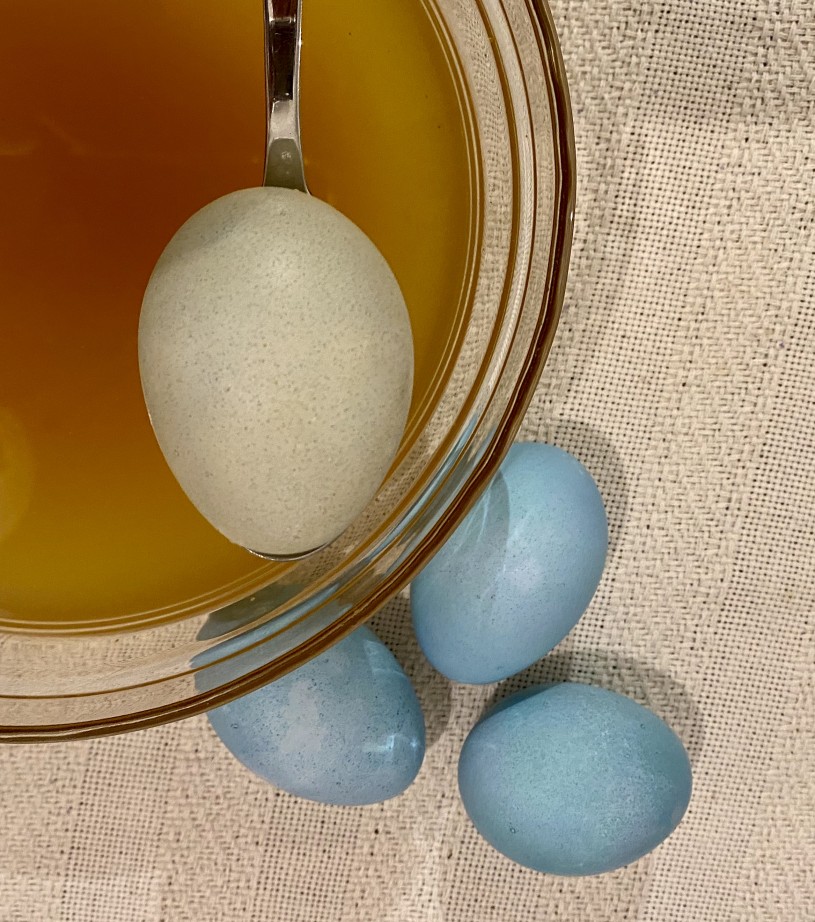
-
Mix 2 cups of water with 4 Tbsp ground coffee and boil it down until it’s syrupy in consistency. (If you don’t have coffee, mixing some Nutella with water will also work!).
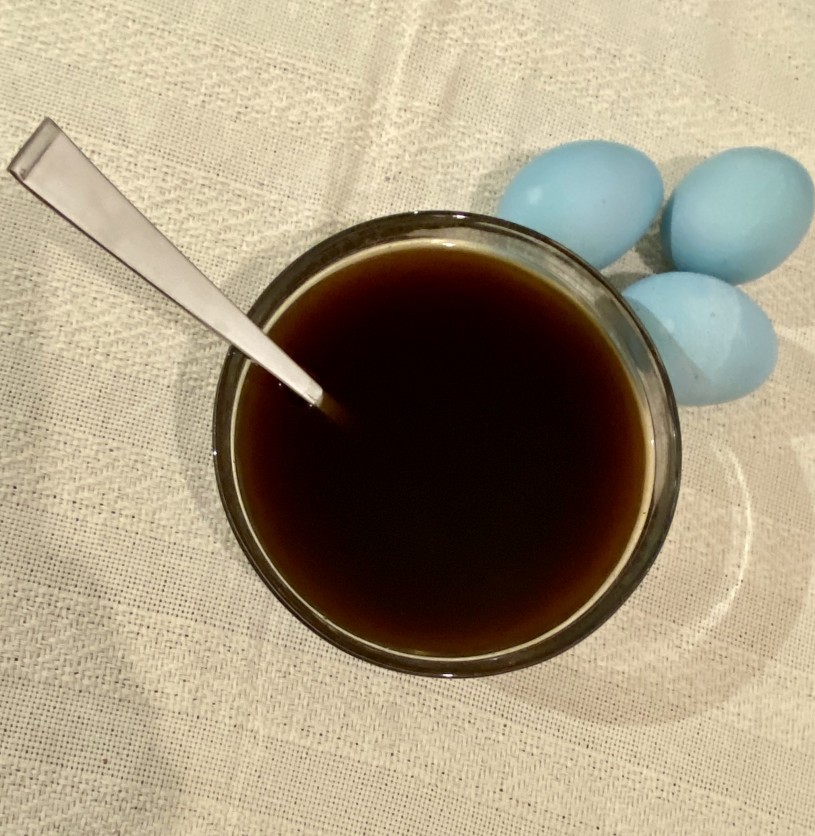
- Let the eggs dry, with the eggs touching as little as possible so the color remains even.
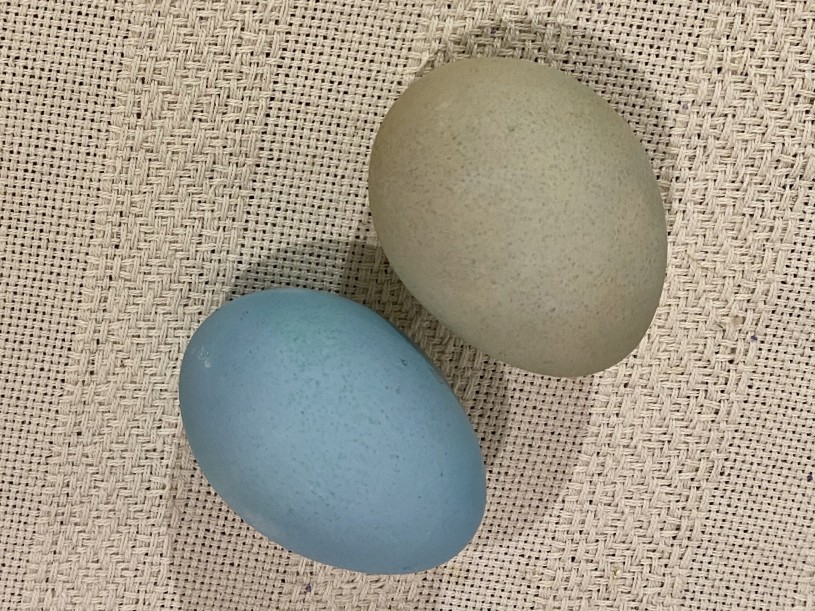
-
When ready to add the speckles, take a paint brush and splatter the coffee onto the eggs by flicking the brush towards the eggs and let dry. Alternatively, pour a little of the coffee into a cup full of the pantry item of your choice and shake it up until the beans/rice/etc are coated in color. Drop one egg in at a time and give the cup a few shakes—you’ll see speckles start to appear as the colored beans touch the egg!
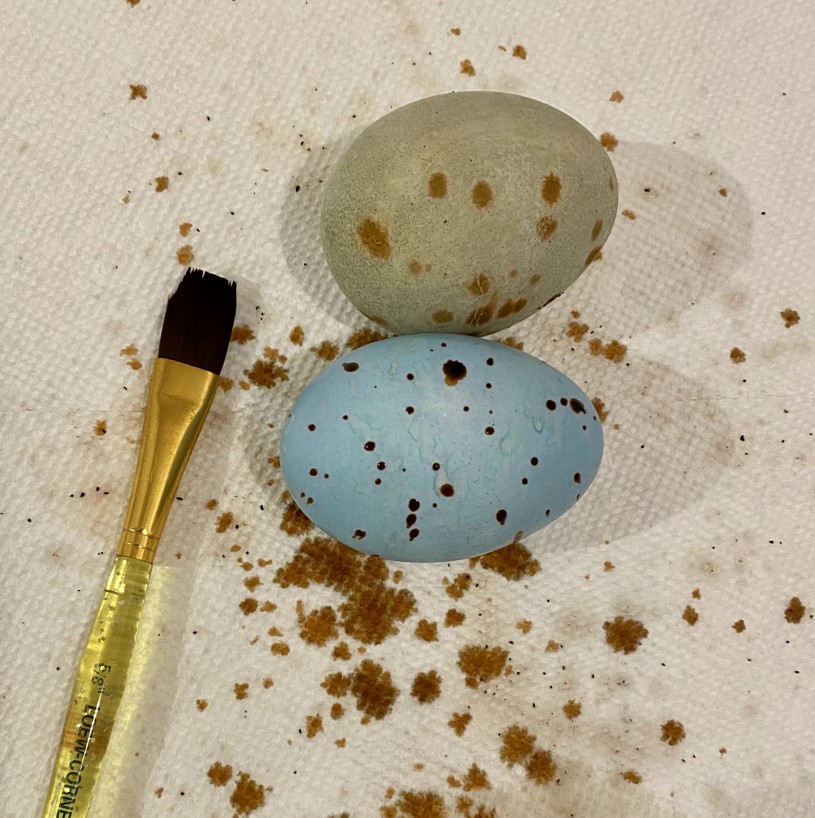

If using food dye, adding vinegar to your water mixture, will still help the dye stick to the eggs. Use the above instructions but substitute natural dyes with the following: For blue-green eggs add 4 drops of blue dye and 3 drops of green dye to the vinegar water and dye the eggs for 5 minutes. Just use 1 Tbsp of water and 2 drops of red + 1 drop of green dye for the speckles in step 6.
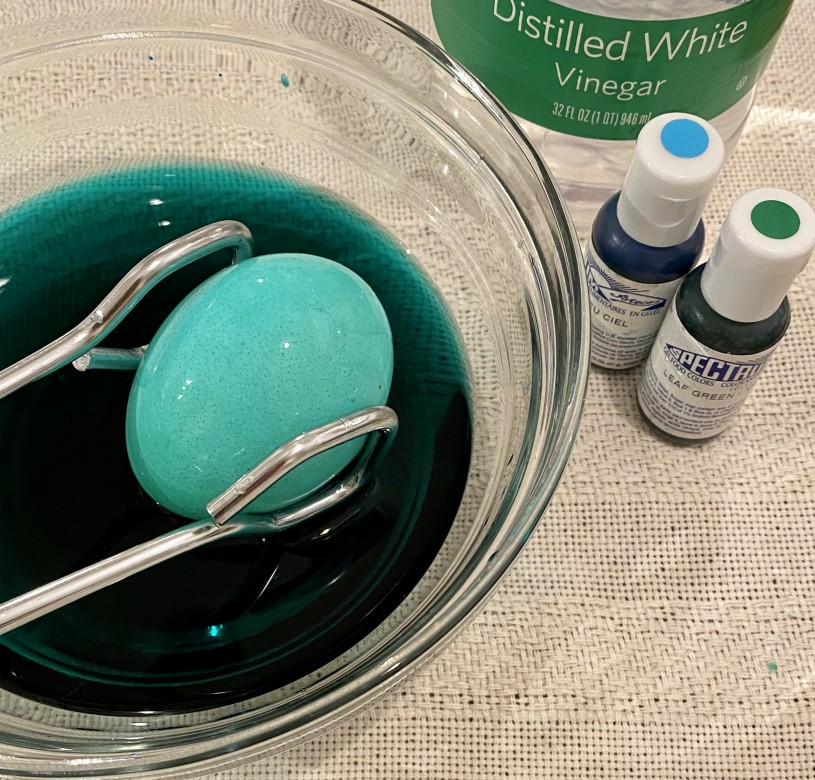
VOILA! Your very own dino eggs!

*If you want your eggs to last longer, instead of using hard-boiled eggs, dye raw eggs and let them dry, then use a needle to punch a small hole in the bottom and let the raw egg run out (use them for baking or scrambled eggs!) Natural dyes will fade over time, so you can also put clear varnish on an emptied, dyed egg shell to preserve your “dino egg” for even longer.